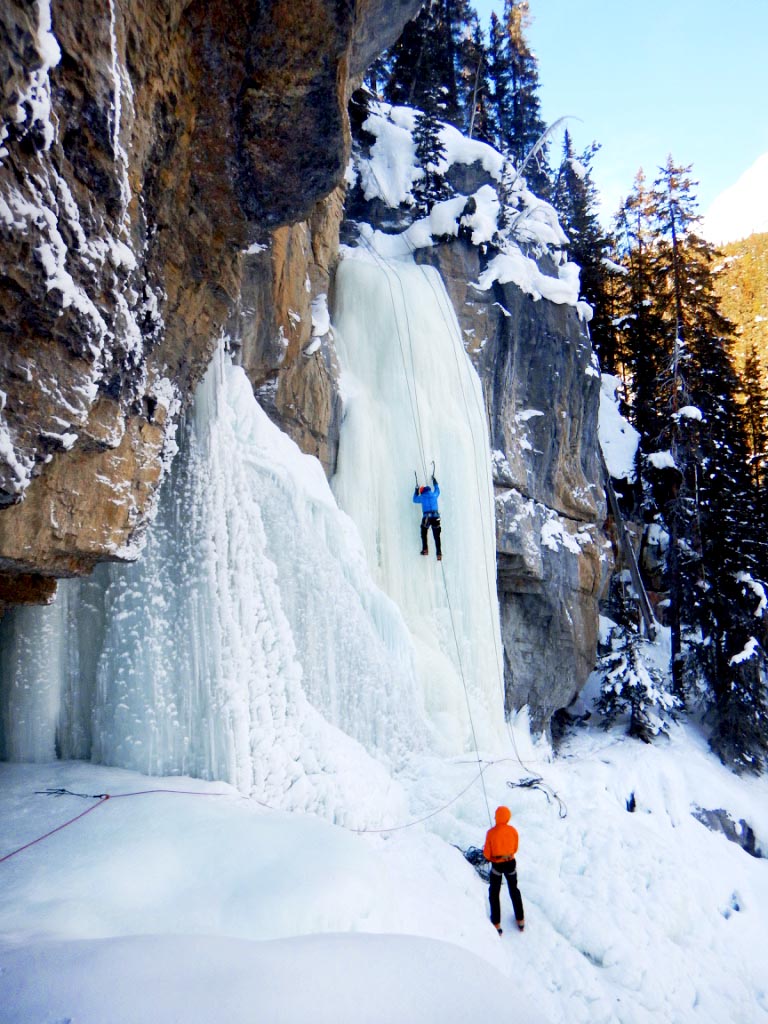
Thanks to Adventure Guide Diploma students Mark Brophy and Ryan Rieberger for the photos.
With new snow during the past few weeks and more snow to come, many of us have been getting outdoors and enjoying what this beautiful season has to offer.
Whether your sense of fun is a snowshoe walk on manicured trails, floating on deep powder in the back country or navigating a route up a frozen waterfall, safety should be topmost. Despite its beauty, winter can quickly turn dangerous and even fatal if simple safety rules aren’t followed.
With that in mind, we turn to Adventure Guide Diploma students Mark Brophy and Ryan Rieberger to share five safety tips that can be easily applied while still keeping your adventures fun.
1. Weather
Before you set out, check the current and forecast weather at Environment Canada 24-Hour Forecast. Keep an eye out for temperature, wind and precipitation. If going into avalanche terrain, consult the avalanche forecast on Avalanche Canada. Also, refer to Spot WX for weather conditions. Further, it’s a good idea to know in advance what time sunset is: see Environment Canada.
2. Trip plan
Tell a friend or family member where you are going and when you plan to be back. The more detail the better, but you don’t have to go over the top.
AdventureSmart has this easy-to-use online trip planner.
3. Extras
Bring extra food and water, both of which are important to keep the body fuelled and warm in the cold. Extra layers can be a life saver when temperatures drop, wind picks up, or snow comes down heavy. And always pack a headlamp because it gets dark surprising early in the winter, as you know if you have checked that in advance.
4. Educate yourself
Going into bigger terrain or further afield? Go with friends who have more experience winter exploring, build your knowledge base, start looking for what you don’t know and then actively find the answers. For example, take an avalanche course, like Avalanche Skills Training (AST) 1.
Training and more resources can be found at Avalanche Canada.
5. Transportation
All of the above is useless if you slide off the road on the way to your trip. So, throw on some winter tires; pack an emergency kit (blanket, candles, shovel, etc.); and maybe put some extra weight in the back, including chains for those winter tires. Check road conditions before you go and give yourself extra time to get there. Refer to Drive BC for road conditions.


